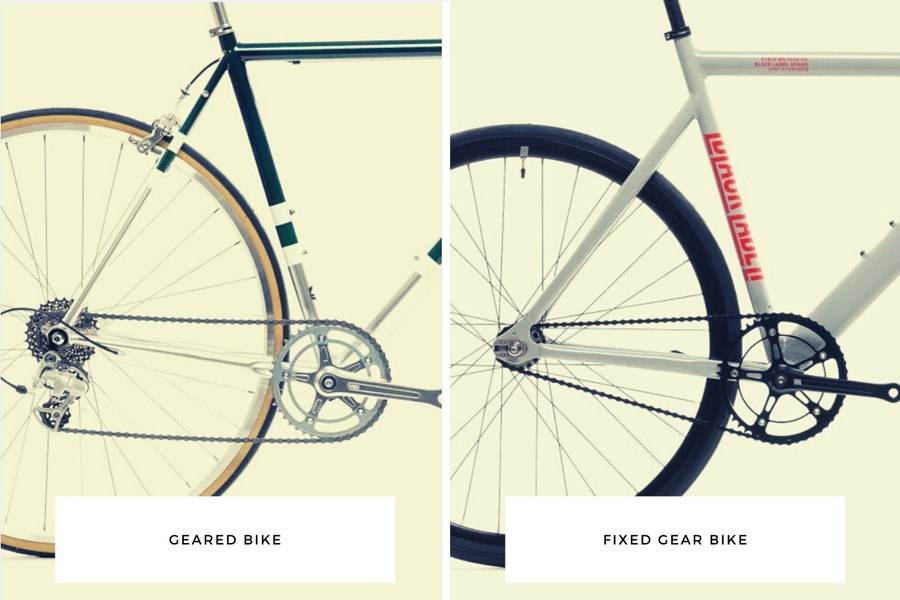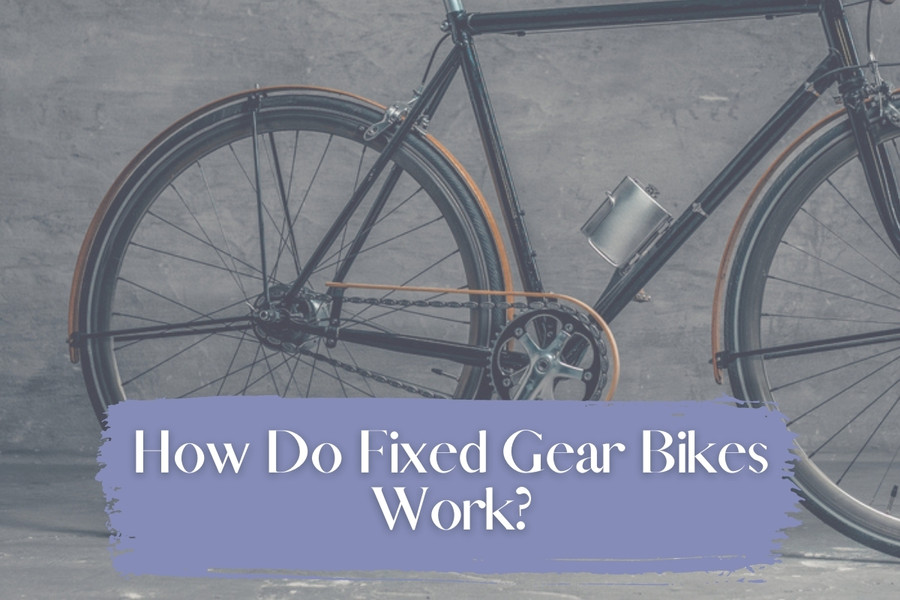A fixed-gear
It hasn’t been until the last 15 to 20 years or so that the term “fixie” has become a part of the cycling pop culture. Fixies are incredibly popular with hipsters who commute to work in the major cities like New York and San Fransico.
The main reason fixies are so popular is that they are:
- Easy to maintain
- Less expensive than a road or mountain
bike . Check our best budget fixed gear bike list! - Lightweight
- Easy to ride because they require no gear changes and
- Look cool
In short, fixies make the riding experience simple, stress-free, and a lot of fun.

How Do Fixed-Gear Bikes Actually Work?
Typical road and mountain bikes have a freewheel mechanism that allows the pedals to stay motionless while the
Now, when it comes to a fixed-gear
Now, what you might not know, is that fixies come with no brakes meaning the only way to slow down is by reversing the motion of your pedaling stroke. Simply put, the only way a fixie will move is when you use the horsepower of your legs. Because the drive sprocket is attached to the back wheel also means that if you have the skillset, you can ride in reverse; a neat little party trick.
Typically speaking, most fixed-gear bikes have a single-speed. You could add a derailleur, but that would take away from the romanticism of the fixie, not to mention it would also add slack to the chain, causing all sorts of mechanical issues.

What Are Fixies Primarily Used For?
Track cycling is one of the most exciting aspects of cycling. Professional cyclists fly around the velodrome at breakneck speeds on bikes that look like they’re straight out of a science-fiction movie. But how many of you new to cycling know that these “track bikes” are actually fixed-gear bikes?
Although rarely used now, in years gone past, many professional riders would rely solely on their fixie
Back in the day, most riders only had one
It wasn’t until the late 1960s – early 70s that fixies started to be “phased” out in favor of the more popular road bikes, which had gears and derailleurs, making them much easier to ride and produce better performance and more efficiently too.
In recent years, the fixies have seen a resurgent comeback of sorts as they are now trendy among young people who reside in the big cities like New York and San Francisco. Fixies are seen as chic and cool because they are somewhat different and unique compared to a regular
Fixies are also popular with

What Are The Benefits and Disadvantages Of Owning A Fixed-Gear Bike ?
Let’s take a quick look at the main benefits and disadvantages of owning a fixed-gear bicycle or fixie.
That’s A Wrap

In summary, although fixies are cool and somewhat unique, they aren’t for everyone. To be honest, for most people, fixies are just not practical for their day-to-day riding.
If you have plenty of riding experience and use your fixie as a second
